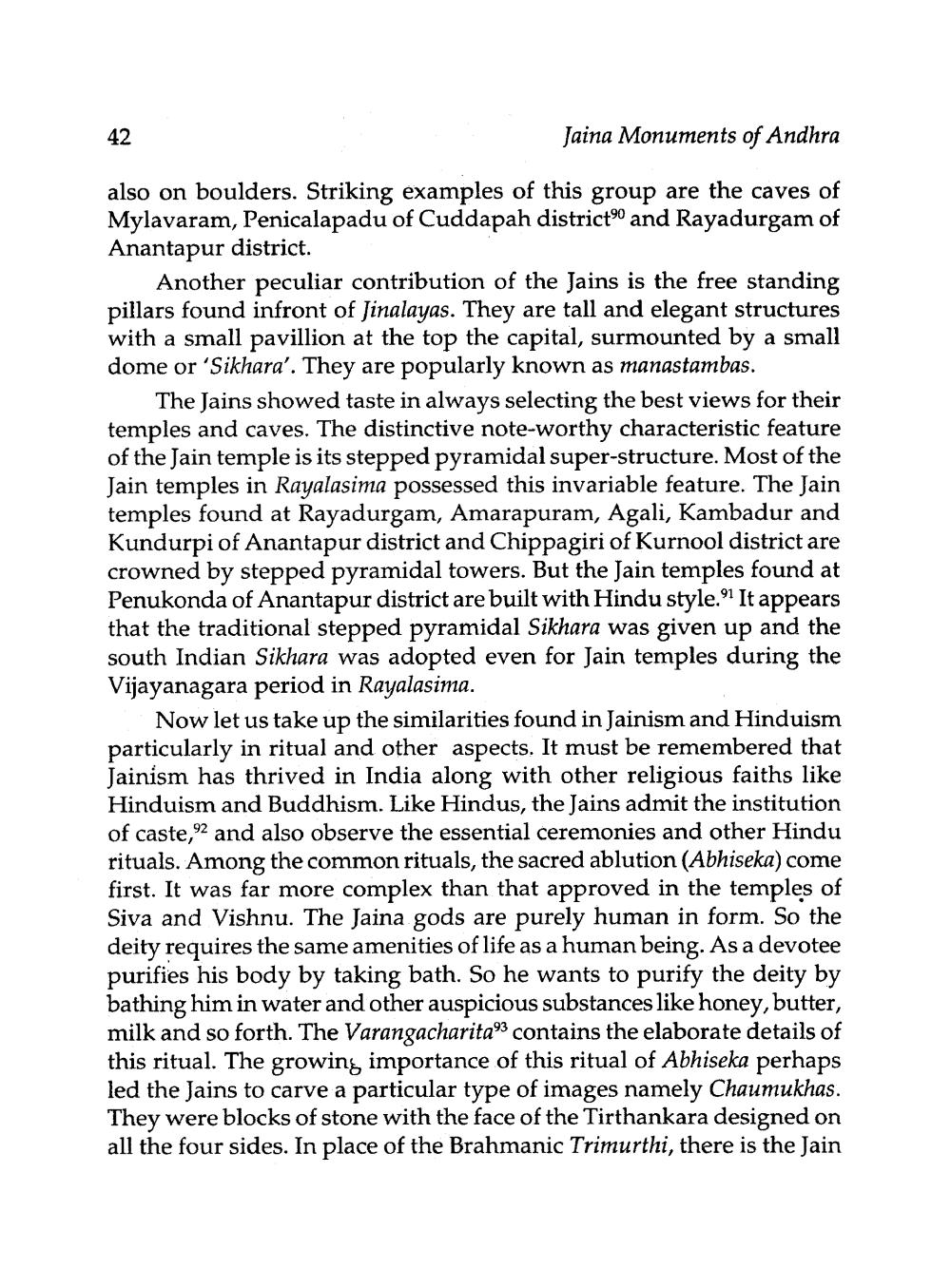________________
42
Jaina Monuments of Andhra
also on boulders. Striking examples of this group are the caves of Mylavaram, Penicalapadu of Cuddapah district and Rayadurgam of Anantapur district.
Another peculiar contribution of the Jains is the free standing pillars found infront of Jinalayas. They are tall and elegant structures with a small pavillion at the top the capital, surmounted by a small dome or 'Sikhara'. They are popularly known as manastambas.
The Jains showed taste in always selecting the best views for their temples and caves. The distinctive note-worthy characteristic feature of the Jain temple is its stepped pyramidal super-structure. Most of the Jain temples in Rayalasima possessed this invariable feature. The Jain temples found at Rayadurgam, Amarapuram, Agali, Kambadur and Kundurpi of Anantapur district and Chippagiri of Kurnool district are crowned by stepped pyramidal towers. But the Jain temples found at Penukonda of Anantapur district are built with Hindu style. 91 It appears that the traditional stepped pyramidal Sikhara was given up and the south Indian Sikhara was adopted even for Jain temples during the Vijayanagara period in Rayalasima.
Now let us take up the similarities found in Jainism and Hinduism particularly in ritual and other aspects. It must be remembered that Jainism has thrived in India along with other religious faiths like Hinduism and Buddhism. Like Hindus, the Jains admit the institution of caste, 92 and also observe the essential ceremonies and other Hindu rituals. Among the common rituals, the sacred ablution (Abhiseka) come first. It was far more complex than that approved in the temples of Siva and Vishnu. The Jaina gods are purely human in form. So the deity requires the same amenities of life as a human being. As a devotee purifies his body by taking bath. So he wants to purify the deity by bathing him in water and other auspicious substances like honey, butter, milk and so forth. The Varangacharita93 contains the elaborate details of this ritual. The growing importance of this ritual of Abhiseka perhaps led the Jains to carve a particular type of images namely Chaumukhas. They were blocks of stone with the face of the Tirthankara designed on all the four sides. In place of the Brahmanic Trimurthi, there is the Jain




